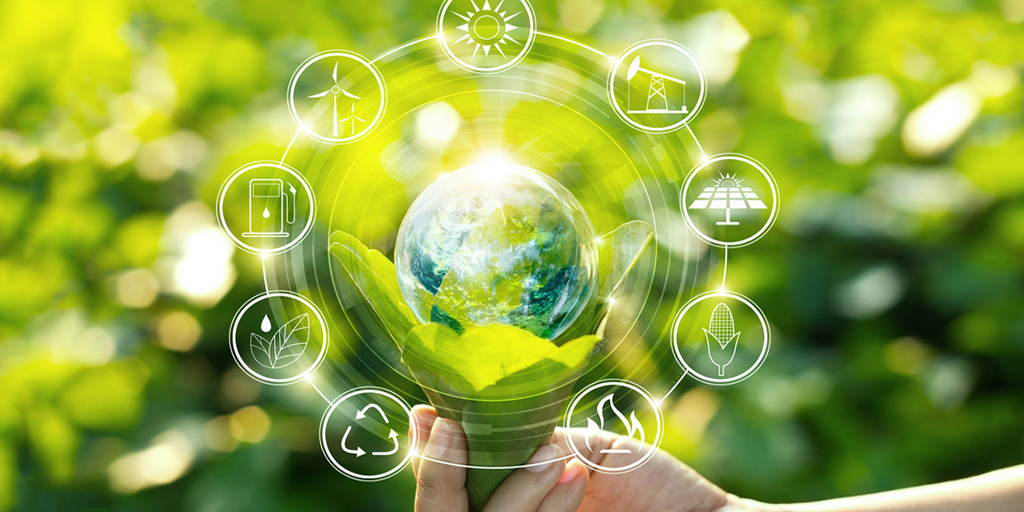
INVESTMENT STRATEGIES
The Energy Group, comprising outstanding specialists and innovative technological partners from various business sectors, focuses on promoting and implementing solutions in the field of alternative energy. We tailor our commitment to individual needs and the stage of development of each project, allowing us to flexibly respond to changing requirements and the dynamic market environment.
Our offer includes a comprehensive package of services covering the full range of activities from initial analysis, through the development of detailed project documentation, to the implementation of key stages leading to achieving energy independence and significant energy cost reductions. We offer support at every stage of the investment process:
- Expertise and Analysis: At the initial stage, we conduct detailed expertise aimed at assessing the energy potential, analyzing the possibilities of using local renewable sources, and assessing the carbon footprint of the project. This ensures that our actions are always based on solid data and precise diagnosis.
- Planning and Designing: We develop advanced technical projects that form the basis for the construction of efficient and sustainable energy installations. Our design solutions combine innovation with practical aspects of implementation, ensuring cost optimization and maximizing benefits for the investor.
- Energy Transformation: We assist companies in transitioning to sustainable energy sources, offering advice and support in choosing the best technologies, planning the modernization of existing energy systems, and implementing innovative solutions.
- Project Implementation: We manage the process of building energy installations from scratch, ensuring coordination of work, supervision of quality of execution, and timeliness. Our experts supervise every stage of implementation, from site preparation to commissioning and optimization of system operation.
- Independence and Savings: Our ultimate goal is to provide customers with full energy independence and significant savings in energy costs, which can range from 30% to 50% compared to traditional sources.
By collaborating with us, you gain access to the latest technologies, expert knowledge, and individually tailored solutions that will contribute to increasing energy efficiency, reducing greenhouse gas emissions, and building a sustainable future for your business.

ENERGY TRANSFORMATION
Energy transformation is a key process occurring in many European Union member states, aimed at transitioning to a sustainable economy through the use of renewable energy sources, improving energy efficiency, and reducing energy consumption. This process is in line with the concept of sustainable development and aims to gradually eliminate coal, uranium, and other non-renewable energy sources from the energy ecosystem.
Key elements of energy transformation include:
- Renewable Energy Sources (RES): Our priority is to increase the share of renewable energy, such as solar, wind, hydro, and geothermal energy, in the global energy balance. Utilizing RES contributes to reducing greenhouse gas emissions, thus serving as an ecological alternative to fossil fuels.
- Energy Efficiency: Improving energy efficiency in various sectors, including construction, industry, and transportation, is also of paramount importance. The goal is to minimize energy losses and maximize the efficiency of the energy used.
- Electrification: Electrification of various aspects of economic life is another significant component of the transformation, which can be supported by energy from renewable sources, further contributing to reducing harmful gas emissions.
- Energy Storage Technologies: Modern methods of energy storage, including battery technologies, are being developed to efficiently store excess renewable energy and utilize it during periods of increased demand.
- Modernization of Energy Networks: The infrastructure of energy networks is being adapted and developed to enable the effective transmission of renewable energy from its production sites to consumers.
- Regulations and Policy: Appropriate legal and policy regulations supporting the transformation, such as emission trading systems, subsidies for RES, or energy efficiency standards, are necessary.
The goal of energy transformation is to achieve a sustainable, low-emission, and balanced energy system that contributes to mitigating climate change, improving air quality, and increasing energy independence. It is a crucial component of global efforts towards sustainable development and combating climate change.
Renewable energy sources, such as wind, biomass (including landfill gas and biogas), water, sun (thermal and photovoltaic energy), geothermal, and tidal energy, offer alternatives to fossil fuels, nuclear fuel, and natural gas, thus playing a key role in energy transformation.
Realizing the full potential of energy transformation requires integrated actions on multiple fronts. This comprehensive approach includes, among others, energy conservation and efficiency enhancement through better thermal insulation of buildings, cogeneration systems implementation, and heat and energy recovery. Furthermore, the implementation of smart metering systems allows for optimizing energy consumption, adapting it to moments when it is cheapest and most readily available.
According to forecasts by the International Energy Agency, gradually increasing the share of renewable energy in the global energy mix could lead to a situation where, within the next 50 years, RES become the dominant, or even the only, energy source worldwide. Such development would significantly impact reducing greenhouse gas emissions.
In Poland, the directions of energy transformation focus on the following areas:
- Improving energy efficiency: Reducing energy consumption and maximizing efficiency in using available resources.
- Increasing supply security: Diversifying energy sources and supply routes to enhance the country’s stability and energy independence.
- Diversifying the electricity generation structure: Developing various energy sources, including nuclear energy, to reduce dependence on a single type of fuel.
- Developing the use of renewable energy sources: Incorporating more energy from RES into the national energy mix.
- Developing competitive fuel and energy markets: Stimulating competition in the energy market, which can lead to lower prices and increased innovation.
- Limiting the impact of energy on the environment: Implementing environmentally friendly technologies and minimizing the negative impact of energy production and consumption on the environment.
Each of these elements plays an important role in transforming the Polish energy sector towards a more sustainable and ecological future.

CARBON FOOTPRINT
The carbon footprint is the total sum of greenhouse gas emissions caused directly or indirectly by products, individuals, organizations, or events.
It is measured in t CO₂e – tons of carbon dioxide equivalent.
Different greenhouse gases contribute to global warming to varying degrees, and the carbon dioxide equivalent allows for comparing emissions of different gases on a common scale, e.g., one ton of methane is equivalent to 25 tons of CO₂.
The carbon footprint includes emissions of carbon dioxide, methane, nitrous oxide, and other greenhouse gases (GHGs) expressed in CO₂ equivalent.
On average, each Pole generates about 8 tons of CO₂ annually.
The goals of calculating the carbon footprint include:
1. Meeting the requirements of public sector clients regarding greenhouse gas (GHG) emissions as part of sustainable public procurement.
– Due to its mandatory nature and impact on the ability to participate in public tenders.
2. Meeting the business requirements of clients, mainly from Western Europe and Scandinavia, who expect information on the carbon footprint of purchased products.
– Important for maintaining competitiveness in markets where environmental awareness is particularly high.
3. Meeting client requirements for reporting to the Carbon Disclosure Project (CDP) and achieving a high rating as a condition for further cooperation.
– Access to global markets often requires transparency and good results in sustainable development.
4. Preparing for the growing expectations of investors, financial institutions, and new legal regulation.
– The need to adapt to market trends and avoid regulatory risk.
5. Integrating the management and reduction of GHG emissions into company strategies as an expression of environmental responsibility.
– Building a socially and environmentally responsible brand can increase consumer and business partner trust.
6. Clients aiming to minimize the carbon footprint by optimizing the use of raw materials, changing packaging, choosing more efficient transport methods, reducing raw material consumption, and reducing waste.
– A response to the specific needs of clients aiming for sustainable development.
7. Implementing actions enabling positive audits of potential clients.
– Important for building new and maintaining existing business relationships.
8. Environmental initiatives in companies aimed at increasing their market value when sold.
– A long-term strategy increasing the company’s attractiveness in the market.
9. Developing systems for collecting data from domestic and foreign branches to calculate the carbon footprint and offer climate-neutral products and services (by compensating for unavoidable GHG emissions).
– Fundamental for ensuring the consistency and reliability of carbon footprint data.
10. Conducting due diligence audits in the process of purchasing companies.
– Important for assessing the value and risk associated with potential investments.
11. Determining the amount of absorbed or avoided GHG emissions for sale as carbon offsets.
– The possibility of generating additional revenue and improving the company’s image.
12. Calculating the carbon footprint of milk suppliers and developing strategies to reduce emissions by 20% by 2030 compared to 2017.
– A goal specific to a particular industry, which may be less relevant from a general business perspective but crucial for the agricultural and food sectors in the context of striving for sustainable production and reducing the carbon footprint.
The carbon footprint, often referred to as the ecological footprint or greenhouse gas footprint, is an indicator of the amount of greenhouse gases emitted into the atmosphere by human activities or as a result of the production and consumption of products, services, business activities, project implementations, or other initiatives. It is used to assess the impact on climate change and the natural environment because greenhouse gases, such as carbon dioxide (CO₂), are key factors causing the greenhouse effect, which in turn contributes to global warming and climate change.
Calculating the carbon footprint can be done in various ways, but it typically focuses on measuring greenhouse gas emissions, expressed in carbon dioxide equivalents (CO₂e). This means that other greenhouse gases, such as methane (CH₄) and nitrous oxide (N₂O), are also taken into account and converted to CO₂ equivalents to standardize the measure of their impact on the greenhouse effect.
Examples of carbon footprints include:
- Product carbon footprint: Refers to greenhouse gas emissions produced at all stages of a product’s life, from production through transport to use and eventual disposal. Examples include cars, clothing, food items, and electronic devices.
- Company carbon footprint: Refers to the total emissions of greenhouse gases generated by all aspects of a company’s activities, including office operations, production processes, transportation, and other business activities.
- Project or event carbon footprint: Focuses on emissions related to a specific project or event, such as the construction of a new facility, organizing a concert, or a festival. This analysis considers all aspects of the initiative that can generate greenhouse gas emissions.
- Personal carbon footprint: Measures the emissions of greenhouse gases resulting from an individual’s daily activities, such as travel methods, diet, or energy consumption in the household.
- City or region carbon footprint: Refers to the total emissions of greenhouse gases generated by the entire population, infrastructure, and activities conducted in a specific geographic area. It includes transportation, energy, waste management, construction, and other local activities.
- Country carbon footprint: Measures the total annual emissions of greenhouse gases at the national level, taking into account all sectors of the economy, such as industry, transportation, agriculture, energy, and others.
- Industry carbon footprint: Analyzes emissions related to a specific industry or business sector, e.g., the aviation industry, agriculture, mining industry. It helps to understand which industries have the greatest impact on greenhouse gas emissions.
- Supply chain carbon footprint: Refers to emissions arising throughout the entire supply chain of a product or service, from raw materials to the final consumer, including production, transportation, storage, distribution, and sales.
- Digital service carbon footprint: Measures greenhouse gas emissions associated with the use of digital services, such as video streaming, cloud computing, or website operation. It considers the energy needed to power data centers, data transmission, and end-user devices.
The carbon footprint is an important tool in efforts towards sustainable development and combating climate change. It helps identify areas where actions can be taken to reduce emissions, contributing to achieving climate goals and reducing environmental impact.
Calculating the carbon footprint is an important tool for measuring and monitoring greenhouse gas emissions, especially carbon dioxide (CO2), associated with human activity. The main goals of calculating the carbon footprint are:
- Monitoring Emissions: Carbon footprinting allows tracking greenhouse gas emissions from various sources and sectors of the economy. It is a crucial tool in assessing the quantities of greenhouse gases being emitted into the atmosphere.
- Emissions Management: It enables the identification of major emission sources and recognizes which actions or processes contribute to the largest emissions. This, in turn, enables taking action to reduce emissions in those areas.
- Accountability and Transparency: Calculating the carbon footprint helps companies, organizations, and consumers understand how much emissions are associated with a particular product, service, or activity. This enables better determination of responsibility for these emissions and action towards their reduction.
- Climate Goals: The carbon footprint is an important tool within international climate agreements such as the Paris Agreement. It helps countries and economic sectors monitor progress towards emission reduction and achieving established climate goals.
- Marketing and Competitiveness: Companies can leverage their low carbon emissions as a selling point and a way to gain a competitive advantage. Products and services with a smaller carbon footprint may be more attractive to environmentally conscious consumers.
- Education and Awareness: Calculating the carbon footprint contributes to raising awareness about the impact of our actions on the environment. It helps consumers, businesses, and institutions better understand which actions contribute to climate change and what steps can be taken to mitigate it.
Carbon footprint calculations can be applied at various levels, from individual products and services to entire economic sectors, as well as at the level of cities, regions, and countries. It supports sustainable development goals, efforts to combat climate change, and the transition to a more ecological and efficient economy.
Our Offer:
- Comprehensive Carbon Footprint Analysis:
We conduct detailed audits and analyses to determine the size of your business’s carbon footprint. We focus not only on direct emissions but also consider the entire value chain – from procurement through production processes to distribution and use of end products. - Individual Emission Reduction Strategies:
Based on the analysis results, we develop a personalized emission reduction plan tailored to the specifics of your business. Our strategies are realistic, based on the latest research and technologies, and aimed at achieving long-term environmental benefits for both the environment and your business. - Certification and Reporting:
We assist in preparing comprehensive environmental reports and certifications, which are increasingly required by customers, investors, and legal regulations. With us, you can easily demonstrate your commitment to climate action. - Communication Support:
We advise on effectively communicating your sustainable development actions, building a positive brand image, and enhancing trust among customers and business partners.
Our approach is holistic and based on solid data. We collaborate with reputable institutions and experts in the field of ecology, ensuring the highest quality of our services. We also understand that every business is different, so we offer individual solutions tailored to your needs.
We invite you to collaborate with us. Together, we can make a positive change by reducing the carbon footprint and contributing to the protection of our planet for future generations.
Contact us today to learn more about how we can help your company become a leader in sustainable development.







